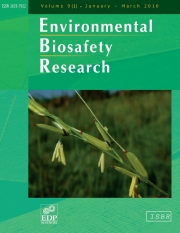Article contents
Identifying hazards in complex ecological systems.Part 3: Hierarchical Holographic Model for herbicide tolerant oilseed rape
Published online by Cambridge University Press: 15 September 2004
Abstract
This paper is the third in a series designed to demonstrate the application of rigorous, systematic hazard identification techniques to ecological systems. Here we use Hierarchical Holographic Modelling to identify the potential ecological hazards associated with the commercial release of herbicide tolerant oilseed rape. Hierarchical Holographic Models decompose complex systems into a series of sub-systems and consider interactions between the components and processes of these sub-systems in order to identify hazards. In this example we considered 1356 potential interactions between the biological, chemical and physical components and processes of the herbicide tolerant oilseed rape environment, and identified 152 potential hazards, grouped into 14 categories. The hazards were subsequently scored for degree of concern and plausibility, and then compared with an equivalent list of hazards generated independently by a checklist approach. The incidence of herbicide tolerant volunteers (and weeds) both on and off the farm had the highest average score of all the ecological hazard categories. The checklist based approach identified or implied 44% of the hazards identified in the Hierarchical Holographic Model, including nine of the ten hazards ranked most important. The checklist approach focussed almost exclusively on the phenotypic and genotypic hazards associated with herbicide tolerant oilseed rape and largely ignored the hazards associated with the circumstances surrounding its use. As a result the checklist identified only 6 out of the 79 potential hazards associated with changes to farming practice. The commercial release of herbicide tolerant oilseed rape will be associated with changes in tillage and the application of post-emergent herbicides. It may also lead to changes in spray schedules of insecticide and fungicide. Many of the environmental hazards identified with these changes are plausible and may warrant further investigation or targeted monitoring.
Information
- Type
- Research Article
- Information
- Copyright
- © ISBR, EDP Sciences, 2004
References
- 25
- Cited by

